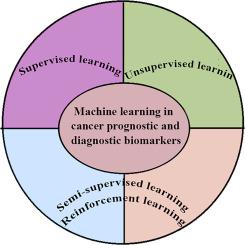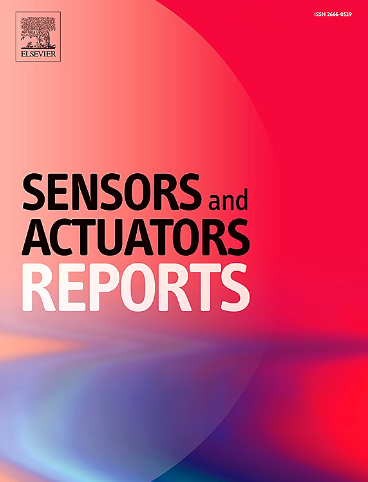Machine learning in cancer prognostic and diagnostic biomarkers: A promising approach for early cancer detection
IF 7.6
Q1 BIOTECHNOLOGY & APPLIED MICROBIOLOGY
引用次数: 0
Abstract
Cancer is a multifaceted disease that arises from both genetic and epigenetic alterations that disturb the regulation of cell growth and programmed cell death, also known as apoptosis. This imbalance results in unchecked cell proliferation, ultimately leading to tumor formation. Globally, cancer presents a significant public health issue, causing millions of deaths each year and placing immense pressure on healthcare systems around the world. Early cancer detection is crucial, as it dramatically improves the chances of successful treatment. Consequently, advancements in biomarker research and diagnostic technologies are vital for creating more effective detection strategies that reduce the impact of cancer on patients and healthcare systems. For biomarkers to be helpful in clinical practice, they must thoroughly evaluate their analytical and clinical validity and utility. Analytical validity focuses on the technical accuracy of biomarker assays, encompassing aspects such as sample handling, assay methods, and the reliability of the results. In recent years, machine learning (ML) and deep learning (DL) have become crucial tools for identifying biomarkers in healthcare engineering. The advancements in artificial intelligence (AI) have expanded these technologies' applications across various healthcare domains. This research highlights the latest innovations and methodologies, including advanced feature selection techniques and ML/DL algorithms. This review emphasizes the transformative impact of ML technologies in biomarker discovery. It also encompasses multiple facets of ML-based platforms, detailing their applications and effectiveness in biomarker discovery. Using sophisticated algorithms, these advanced computational methods allow researchers to analyze various data types, from genomic sequences to proteomic profiles. This approach facilitates the identification of novel biomarkers, enhances our understanding of cancer biology, and paves the way for improved patient care through personalized medicine. This review highlights exciting opportunities for future research, encouraging continuous innovation and collaboration across disciplines among data scientists, healthcare experts, and academic researchers.

癌症预后和诊断生物标志物中的机器学习:早期癌症检测的一种有前途的方法
癌症是一种多方面的疾病,由遗传和表观遗传改变引起,这些改变扰乱了细胞生长和程序性细胞死亡(也称为细胞凋亡)的调节。这种不平衡导致不受控制的细胞增殖,最终导致肿瘤的形成。在全球范围内,癌症是一个重大的公共卫生问题,每年造成数百万人死亡,并给世界各地的卫生保健系统带来巨大压力。早期癌症检测至关重要,因为它能极大地提高成功治疗的机会。因此,生物标志物研究和诊断技术的进步对于创造更有效的检测策略,减少癌症对患者和医疗保健系统的影响至关重要。为了使生物标记物在临床实践中有所帮助,他们必须彻底评估其分析和临床有效性和实用性。分析效度侧重于生物标志物测定的技术准确性,包括样品处理、测定方法和结果可靠性等方面。近年来,机器学习(ML)和深度学习(DL)已成为医疗保健工程中识别生物标志物的重要工具。人工智能(AI)的进步已经将这些技术的应用扩展到各个医疗保健领域。这项研究强调了最新的创新和方法,包括先进的特征选择技术和ML/DL算法。这篇综述强调了机器学习技术在生物标志物发现中的变革性影响。它还涵盖了基于ml的平台的多个方面,详细介绍了它们在生物标志物发现中的应用和有效性。使用复杂的算法,这些先进的计算方法允许研究人员分析各种数据类型,从基因组序列到蛋白质组谱。这种方法有助于识别新的生物标志物,增强我们对癌症生物学的理解,并为通过个性化医疗改善患者护理铺平道路。这篇综述强调了未来研究的激动人心的机会,鼓励数据科学家、医疗保健专家和学术研究人员之间的持续创新和跨学科合作。
本文章由计算机程序翻译,如有差异,请以英文原文为准。
求助全文
约1分钟内获得全文
求助全文
来源期刊

Sensors and Actuators Reports
Multiple-
CiteScore
9.60
自引率
0.00%
发文量
60
审稿时长
49 days
期刊介绍:
Sensors and Actuators Reports is a peer-reviewed open access journal launched out from the Sensors and Actuators journal family. Sensors and Actuators Reports is dedicated to publishing new and original works in the field of all type of sensors and actuators, including bio-, chemical-, physical-, and nano- sensors and actuators, which demonstrates significant progress beyond the current state of the art. The journal regularly publishes original research papers, reviews, and short communications.
For research papers and short communications, the journal aims to publish the new and original work supported by experimental results and as such purely theoretical works are not accepted.
 求助内容:
求助内容: 应助结果提醒方式:
应助结果提醒方式:


